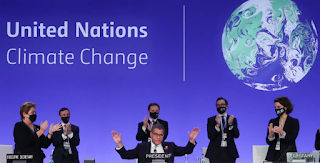Guest blog: The future of disaster resiliency and the need for a global vulnerability index
Guest blog originally published on the International Science Council web site.
As climate change accelerates the devastation of disaster in populated environments, government leaders across the world are figuring out how to best mitigate these impacts before they happen. First, they must assess who the most vulnerable groups are in their population.
Our research has revealed the surprising fact that the United Nations currently does not have a global vulnerability index. Even though vulnerability is being discussed in different UN fora, there is concern that if the UN does not make efforts to unify and coordinate these discussions, it may create confusion that will not adequately address the needs of the most vulnerable populations.
In this blog we discuss current policies in place, with recommendations for improvement in order to identify the most vulnerable groups on a global and regional level, which could then inform the local level. There are currently vulnerability indices in place that do highlight some aspects of vulnerability, but a more comprehensive index would enable greater insight into developing nations and on necessary groups.
What vulnerability indices are currently being used?
In December 2020 the UN General Assembly called upon the Secretary General to make recommendations for the development, coordination, and potential use of multi-dimensional vulnerability indices for Small Island Developing States.
Originally decided in 2000 and subsequently revised in 2005, the Economic and Environmental Vulnerability Index (EVI) is one of the earliest vulnerability indices used at the regional and global level. Since 2005, the EVI has served as one of three criteria that the UN Committee for Development Policy (UNCP) uses to identify and graduate countries from the least developed categories. It currently consists of two dimensions of vulnerability – economic and environmental – and eight indicators developed from an agreed methodology that is reviewed every three years. One of its major strengths is that its data covers 143 countries dating back to the year 2000.
While an economic model to address vulnerability is important, it does not fully capture the scope of vulnerability with deliberation of geography, finances or environmental conditions. What considerations should be taken when creating a global vulnerability index? First, we look at the data.
What are our current data sources?
In February 2021 Jacob Assa and Riad Meddeb of the UNDP developed an excellent report in which they proposed an expanded multi-dimensional vulnerability index (MVI) that builds upon the EVI. The UNDP MVI includes eleven indicators from the EVI, including some from the World Bank. The indicators represent four dimensions of vulnerability: economic, financial, environmental and geographic.
While this MVI had previously been focused on Small Island Developing States, its indicators may be globally applicable and include data that covers 126 countries. The UNDP MVI includes three economic indicators from the EVI; merchandise export and concentration, instability of agricultural production, and instability of exported goods and services. It adds three financial indicators from the World Bank relating to international tourism, personal remittances, and foreign direct investment. The three geographic indicators include remoteness and landlockedness, and the shares of populations in both dry lands and low elevated coastal zones.
UNICEF has started to look at measuring vulnerability of children. In 2021, UNICEF developed the Children’s Climate Risk Index, or CCRI, whose indicators are separated into two pillars. Pillar 1 is the exposure to climate and environmental shocks and stresses, which includes several indicators. Pillar 2 is Child Vulnerability, which includes set of indicators for poverty, communication assets, and social protection; water, sanitation, and hygiene; education, and child health and nutrition.
In general, indicators need to be customized for different regions to capture local dimensions and reflect the needs of local vulnerable populations. The ISC is contributing a piece of this puzzle towards a solution by engaging academics and practitioners to look for a path forward that can complement the UN process. The goal is to see a way to develop multiple vulnerability indices through a regional process that informs local action for vulnerable groups.
How do we apply the multi-dimensional vulnerability index (MVI)?
Re-Energize DR3, a Belmont Forum funded project, has cultivated collaborative research action on disaster risk reduction and resilience. Their research is focused on the governance of disaster risk reduction and resilience with an emphasis on floods, droughts and heat waves in coastal cities and islands. This collaboration spans seven nations on the continents of Europe, Africa, Asia and North America, with researchers from multiple disciplines across the world, led by University College London.
The United States team of Re-Energize DR3 has been studying the governance of disasters in the US at the federal, state and local levels, using the state of North Carolina as a case study in their research and stakeholder engagement workshops.
There’s been some interesting work on the MVI from the UN Office of the High Representative for the Least Developed Countries, Landlocked Developing Countries and Small Island Developing States (UN-OHRLLS). Their 2021 report includes an expanded review of existing MVI and recommendations for criteria on the development of an MVI. It also links vulnerability and resilience together using dimensions of structural vulnerability, and structural and policy resilience, which are particularly promising.
This workaround multi-dimensional vulnerability indices needs to better integrate vulnerable groups. Thus far, vulnerability indices only apply at the national and regional level. We’ve seen examples of economic, financial, geographic, and environmental vulnerability indicators. In order to develop more comprehensive vulnerability indices, there needs to be a broader range of involvement of clearly identified vulnerable groups.
What is the benchmark goal for MVI as recommended by DR3?
It is hoped that the regional vulnerability indices will be completed in time for the 2027 review of the 2030 Agenda for Sustainable Development, which includes the Sustainable Development Goals, and the review of the Sustainable Development Indicators in 2028, which will be agreed upon by the UN Statistical Commission.
In May 2022, Kristen Downs gave a presentation as a representative of the University of North Carolina Water Institute, the Re-Energize DR3 project, and the Scientific and Technology Major Group, which is convened by the International Science Council (ISC). She presented on the Ignite Stage as part of the 7th Session of the UNDRR Global Platform for Disaster Risk Reduction in Bali, Indonesia.
Her talk was entitled, “How should we address disaster vulnerability at the global and regional levels?”
You can see the video of Kristen’s presentation at this link, as well as the other Ignite Stage presentations here.
There are two parts of this conversation: the first deals with the vulnerability of countries and the second deals with the vulnerability of groups. How does policy ensure that both are addressed adequately and in an integrated manner and if so, how could this be accomplished? In order to address these questions, we will need to 1) undertake collaboration and advocacy within existing UN processes; 2) conduct further research that centers vulnerable communities and equitable stakeholder engagement methods; and 3) evaluate current policy making under the lens of multidimensional vulnerability.
Kristen Downs, Emily Gvino and Rene Marker-Katz are part of a Belmont Forum funded grant, Re-Energize Governance of Disaster Risk Reduction and Resilience for Sustainable Development, or Re-Energize DR3.

Kristen Downs is a PhD Candidate in Environmental Sciences and Engineering and graduate research associate at the Water Institute at the University of North Carolina at Chapel Hill (UNC). Her background is in environmental science and engineering, grounded in public health and international development. Her primary interests include how infrastructural planning and policies and technology development can be used to provide sustainable services in the face of uncertainties such as environmental and climate change, development, and population growth. Kristen’s research focuses on modeling the risks, uncertainties, and implications associated with climate change impacts on waterborne disease, as mediated by the service quality of water and sanitation infrastructure and its interactions with weather variability and extreme events.

Emily Gvino, MCRP, MPH is an Associate with Clarion Associates, a land use consulting firm based in Chapel Hill, North Carolina. Emily works with public sector clients in the U.S. at the local and regional level, helping communities find innovative solutions and plan for a resilient and sustainable future. Emily’s work focuses on the intersections of climate justice, disaster resilience, health, and environmental planning. Emily also supports the Re-Energize DR3 team as a Strategic Consultant, collaborating on exploratory research, writing projects, and presentations.

Rene Marker-Katz is a graduate student at the University of North Carolina at Chapel Hill (UNC-CH) pursuing a Master’s degree in City and Regional Planning (MCRP) with a specialization in land use and environmental planning. Her graduate degree will be accompanied by a certification in Natural Hazards Resilience. She is currently working as a Research Associate with the UNC Water Institute Re-Energize DR3 team to strengthen the relationship between governance and private/public entities to better support vulnerable community groups through climate-related disasters. Rene’s specialized interests are in hazard adaptation, urban sustainability practices, and equity within public policy.




Comments
Post a Comment